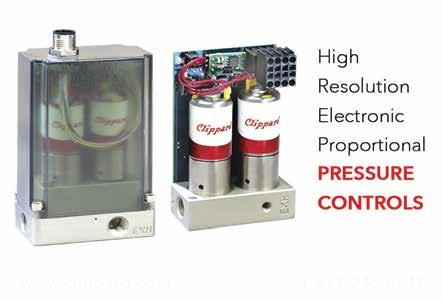It’s OVER Breaking with Valve Position Tradition By Jerry Hines, Key Account Manager, Pepperl+Fuchs.
T
ank farms play a critical role in the oil and gas industry. They serve as way stations for crude oil before it is needed at the refinery, finished product before it is needed by the end user, and different products before mixing. These facilities are also home to large networks of pipes and therefore large numbers of valves. Valves are essential for controlling the flow of liquid petroleum into a tank-farm’s pipe networks and into and out of its tanks. Gate and expanding plug valves have been the primary valves in tank farms for decades; however, check valves, ball valves, and butterfly valves have also been introduced to provide backflow protection and emergency shutdown capabilities. With networks of different types of valves as far as the eye can see, monitoring valve position manually is nearly impossible. Fortunately, large-scale automation of these systems has created safer and more streamlined valve monitoring, preventing valve lineup errors and subsequent product mixing, overflow, fire, or explosion. Devices that ensure clear and consistent indication of valve position are a critical component for reliable monitoring from the control room (figure 1).
32
APRIL 2021
Figure 1
Traditional detection Valve position sensors are mounted on the actuators for both rotary-actuated valves and linear-actuated valves. Sensors transmit valve information directly to the control room using a wired or wireless connection. The connection between the sensor and the control room gives operating personnel feedback on valve position in real time, indicating when it is safe to start transferring product. This eliminates human error and improves the reliability of valve operations. The sensors are available in two basic switching options: mechanical and noncontact. Traditional mechanical valve position feedback systems depend on cams, mechanical linkages, and other physical components to detect valve position. Mechanical position sensors are mounted on the extended shaft of valve actuators and often come in large switchboxes (figure 2). The switching elements must make physical contact with a target
Figure 2
to actuate. Once the target is detected, mechanical systems send discrete electrical signals to the control center to indicate valve position. While traditional valve position solutions are often more affordable, they have multiple moving parts that are subject to wear and corrosion. Because of this, the systems often come in enclosures designed to protect the internal switching elements from direct exposure to the environment. Even so, dirt and moisture still enter many of these enclosures because they are not designed to completely shield the mechanical components inside. This means they do not provide lasting protection against gases, vapors, and atmospheres, which leads to corroded contacts and electrical components. In these often harsh conditions, data and power cables are subject to physical damage. In particular, severed or compromised cables can lead to unreliable readings of the valve’s position. Traditional approaches often involve additional circuitry to monitor these systems for situations in which the switch becomes unresponsive or the leads are damaged. Although still popular, traditional solutions are not ideal for the rugged environments in the downstream oil industry. Constant exposure to the elements, especially in locations near the ocean, decrease the reliability of mechanical feedback systems over time, which leads to detection errors and device failure.
WWW.FLUIDPOWERJOURNAL.COM • WWW.IFPS.ORG






